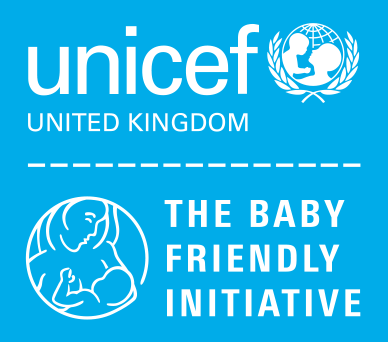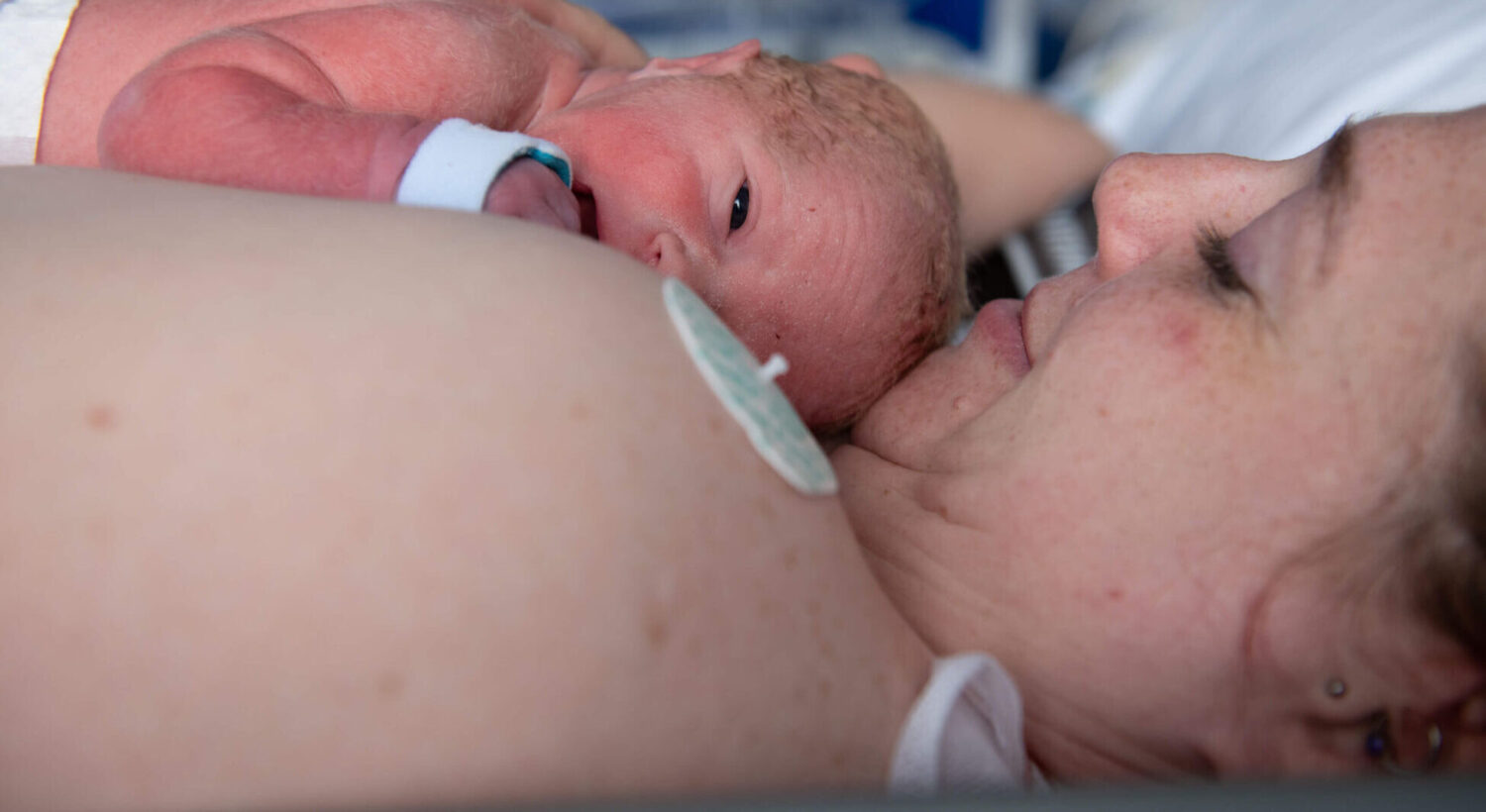Read more for support for parents on tongue-tie
Many babies have a piece of membrane under their tongue (the frenulum) which does not usually cause problems. Tongue-tie (ankyloglossia) occurs when the frenulum is abnormally short, stopping the tip of the tongue from protruding beyond the lower gum. This may cause problems with feeding as a result of the inability to move the tongue in a normal way and therefore attach and suck effectively. The frenulum may reach the tip of the tongue and be easily seen, and may be either thin and stretchy or thicker/tighter. A posterior frenulum, which is at the back of the tongue, can be less easy to see and in some cases may only be felt. If you and/or your baby are experiencing feeding difficulties, an assessment of your baby’s tongue function and a feeding assessment by a specially trained professional will determine whether a division of the membrane (frenulotomy) could help.
Many tongue-ties are asymptomatic and do not require treatment, and some may resolve spontaneously over time. In some instances, support to improve attachment is all that is needed. However, if the condition is causing problems with feeding, surgical division of the lingual frenulum can be recommended and carried out as early as possible. This may enable the mother to continue breastfeeding rather than having to switch to artificial feeding.
Additional information
The following information is adapted from an information sheet provided by Mr Mervyn Griffiths, Consultant Paediatric & Neonatal Surgeon at Southampton General Hospital.
Why divide tongue-ties?
Some babies with tongue-ties can breastfeed perfectly. Others have difficulty breastfeeding and a few have difficulty bottle-feeding.
For breastfeeding babies, the difficulty is because the tongue-tie prevents the baby from attaching efficiently to the breast (failing to latch on). This is due to a combination of the baby not opening its mouth widely, the tethered, short tongue not covering the lower gum, and the disordered movements of the tethered tongue when sucking. The inefficient attachment to the nipple (poor latch) doesn’t remove milk from the breast properly and isn’t easy to maintain. As a result, the baby slips off the breast, chomps on the nipple with both gums, and then slips off completely. The baby therefore ‘nipple feeds’ rather than breastfeeds, which is inefficient and can be excruciatingly painful for the mother.
It is very frustrating for both mother and baby who may ‘head-bang’ like a rock star, or desperately wave its arms “Like they are trying to climb Everest.” Some babies feed inefficiently for a short period of time, get fed up, fall off, fall asleep, and then wake an hour later as they are still hungry, so that they are feeding almost continuously.
Some mothers will their babies to stay asleep as they know that the next feed will be agony, but then feel guilty afterwards. With bottle-feeding babies, the difficulty is that they can’t make a good seal around the teat. The suck is inefficient, and the feed takes two to three times as long as for an efficient baby. As the seal is leaky, babies dribble milk in varying amounts, and may need a bib or muslin during the feed or a change of clothes afterwards.
A few babies are so inefficient that they squirt (not just dribble) the milk out of the side of their mouths. As the milk leaks out, air gets in and is swallowed. This can make the baby very ‘windy’ with the possibility of increased colic and irritability. Many parents try multiple types of teat or have to hold the bottle in a precise position for optimal feed efficiency.
How are tongue-ties divided?
Dividing your baby’s tongue-tie doesn’t need a general anaesthetic, providing they are under eight months old. It only takes a minute or so, though it may well seem longer. A trained health professional will wrap your baby up with a towel, divide the tongue-tie with sterile scissors and bring your baby back to you quickly so that you can feed them.
Does it hurt?
Logically, dividing a tongue-tie ought to hurt. However, a significant number of small babies (about one in six) are asleep when their tongue-tie is divided and stay asleep during the procedure!
Older babies don’t like being wrapped up so they usually cry out, and it can sometimes be quite difficult to know whether dividing their tongue-tie is painful.
Following division, the baby is promptly unwrapped and returned for feeding. Although some babies will cry for up to 60 seconds, the average is just 15 seconds (and some just stay asleep).
So, for some babies, division doesn’t hurt, and for the rest it doesn’t hurt very much at all.
What about the wound?
A few drops of blood are normal, but this always stops quickly and is never a problem.
The inside of the mouth heals much faster than most of the rest of the body because the lining of the mouth is being worn away and renewed all the time. This happens even quicker in babies, so there is no need for any form of wound management; the baby just needs to be fed.
Often there is a white patch under the tongue, which takes 24-48 hours to heal. This doesn’t seem to cause the baby any discomfort.
The future
If the baby is breastfeeding or bottle-feeding well, then the tongue-tie doesn’t need to be divided. Most tongue-ties in newborn babies are thin, but those remaining in three-year-olds are mostly thick. So, the thin ones must either have been divided by the lower teeth as they come through, or they are accidentally torn by a parent putting a teaspoon of food under, rather than over, the tongue, or the infant thrusts a toy into their own mouth.
Although some babies can breast or bottle feed well, they may have problems coping with lumpy food. They may not be able to transfer food from the front to the back of the mouth or chew properly. Tongue-tie division, at any age, will help these infants.
A few tongue-ties do persist and may cause speech or other problems, but this won’t really be apparent until the child is at least three years old. If there is a problem, the tongue-tie can be divided under a very short general anaesthetic. Most children with a tongue-tie and a speech problem improve following division.
To refer a mother and baby
Send/fax a letter to the nearest hospital that divides tongue-ties.
Find out if there is funding for an NHS referral to your chosen hospital; otherwise the mother and baby will have to be seen privately, and fees will vary between centres.
The letter must contain the following basic information as well as the details of the feeding problem:
- baby’s full name
- date of birth
- address with postcode
- phone number (and mobile if necessary)
- mother’s name
- GP’s name and address with postcode.
For information on UK hospitals that offer tongue tie services, please go to the Association of Tongue-Tie Practitioners website. This is not a complete listing, as it only provides information from Trusts who have requested to have their details uploaded on this site. If as a parent or practitioner you have additional information of services in your area, please do contact the ATP as this will help keep the listings current.
Please note that this link is merely for information and inclusion does not constitute any endorsement or recommendation from UNICEF UK.



